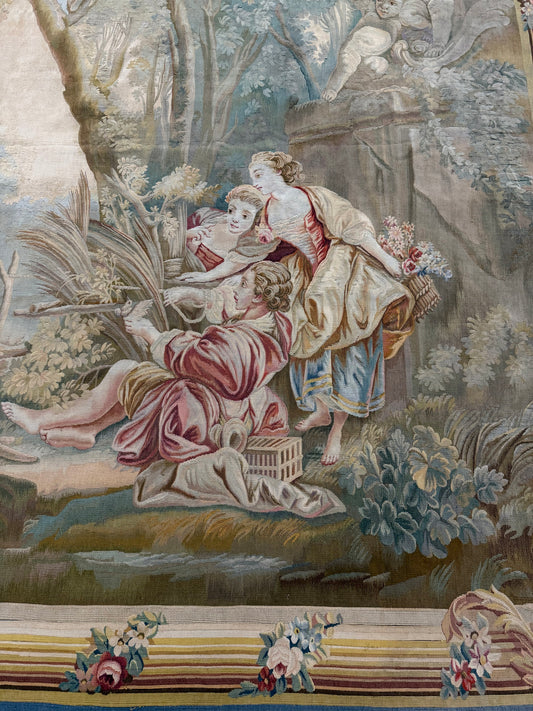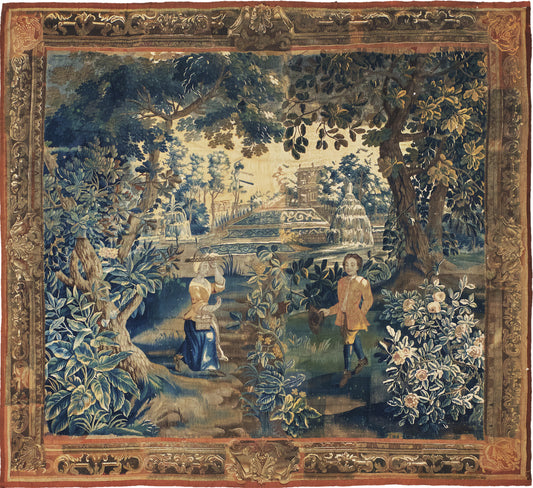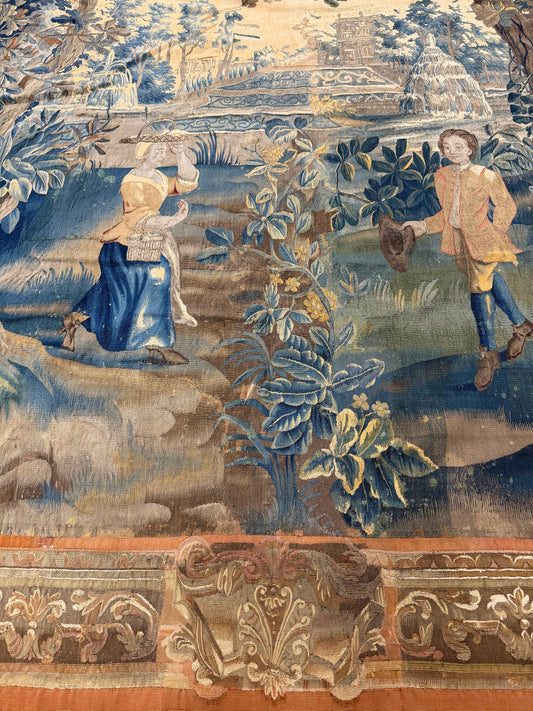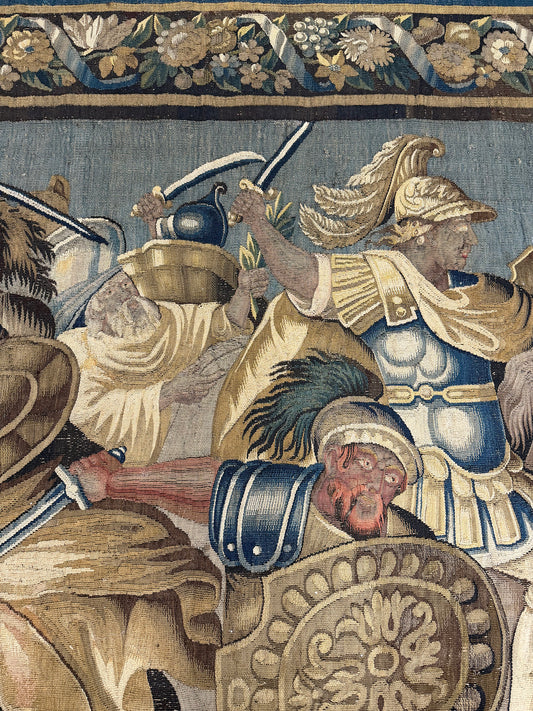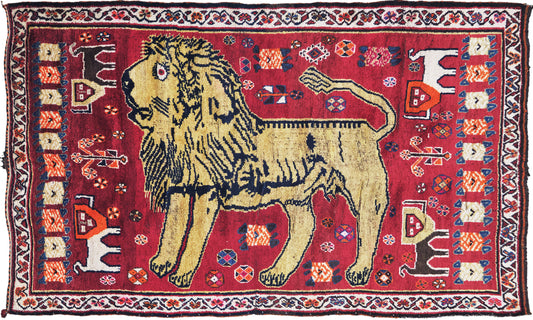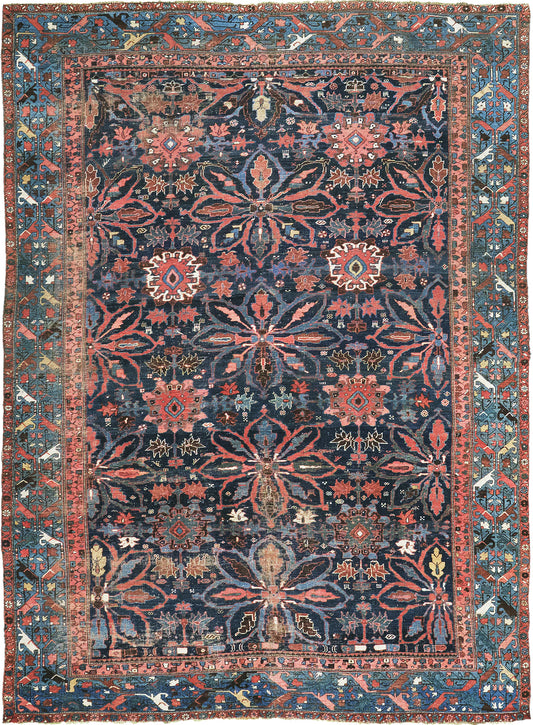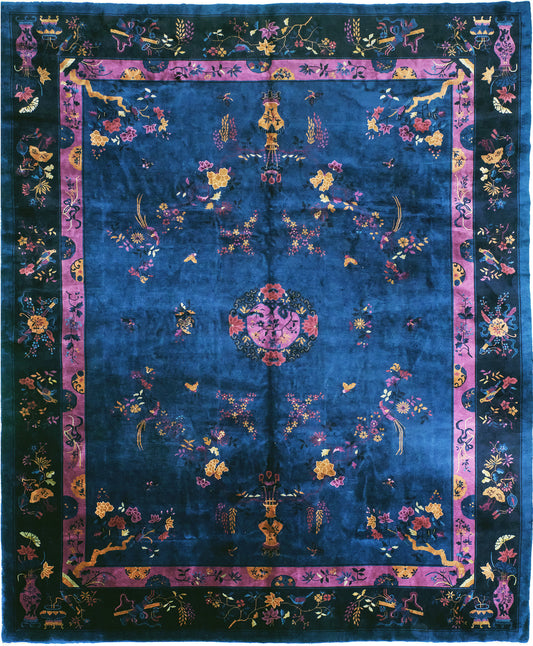-
Antique Persian Bidjar Runner 55159
Regular price $11,500.00 USDRegular price Sale price $11,500.00 USDUnit price per -
Antique Chinese Art Deco
Regular price $14,000.00 USDRegular price Sale price $14,000.00 USDUnit price per -
Antique Turkestan Khotan
Regular price $7,600.00 USDRegular price Sale price $7,600.00 USDUnit price per -
Antique Persian Ghashghaei "Lion Rug"
Regular price $6,500.00 USDRegular price Sale price $6,500.00 USDUnit price per -
Antique Persian Halvai Bidjar
Regular price $14,000.00 USDRegular price Sale price $14,000.00 USDUnit price per -
Antique Persian Malayer Runner
Regular price $7,200.00 USDRegular price Sale price $7,200.00 USDUnit price per -
Antique Persian Malayer Runner
Regular price $15,300.00 USDRegular price Sale price $15,300.00 USDUnit price per -
Sebru, Domicile Collection, Antique Red
Regular price $7,900.00 USDRegular price Sale price $7,900.00 USDUnit price per
Collapsible content
More About Antique Rugs
Antique rugs bring warmth, character, and balance to a room without feeling heavy or formal. Their softened colors and worn-in patterns make them easy to live with, whether your home leans modern, transitional, or classic.
Choosing the right piece comes down to understanding how age, wear, and scale interact with your space. When selected thoughtfully, antique rugs feel grounded, timeless, and visually calm rather than decorative.
What Antique Rugs Are and Why They Look the Way They Do
Antique rugs show visible signs of age that developed naturally over decades of use. These changes include gentle fading, softened outlines, and areas where the pile has worn lower from foot traffic. None of this is accidental or manufactured.
True antique rugs were woven with hand-spun wool and natural dyes. Over time, light exposure, movement, and daily use slowly break down surface fibers while leaving the structure intact. This process creates depth and variation that cannot be replicated in newer rugs.
Unlike intentionally treated pieces, antique rugs age unevenly and honestly. Each one carries its own rhythm of wear, which is why no two look alike. If you are drawn to rugs with similar character but less age, you may also want to explore Mehraban’s curated selection of vintage rugs, which offer a related aesthetic with a slightly younger profile.
How Room Size Shapes Your Rug Choice
Room size is the foundation of every good rug decision. Even the most beautiful antique rug will feel out of place if the scale does not match the space.
In larger rooms, undersized rugs tend to float awkwardly and break visual flow. Antique rugs work best when they anchor furniture rather than sit beneath it as an afterthought. Their faded patterns help them blend across wide surfaces, making larger sizes feel calm rather than overwhelming.
In smaller rooms, choosing a rug that extends slightly beyond key furniture pieces can make the space feel more open. Because patterns soften contrast, these rugs do not crowd a room the way sharper designs can.
Before selecting a rug, measure the usable floor area and consider how furniture will sit on top of it. This simple step prevents the most common sizing mistake and ensures the rug supports the room instead of shrinking it.
How to Choose the Right Rug Size by Room Type
Each room has its own rhythm, and antique rugs should support how the space is used day to day. Size decisions are less about strict rules and more about proportion, flow, and comfort.
The table below offers a quick comparison to help you choose the right rug size based on room function and layout.
|
Room Type |
Recommended Rug Placement |
Why It Works |
|
Living Room |
Front legs of sofas and chairs on the rug, or all furniture fully on the rug |
Creates a unified seating area and prevents the rug from feeling disconnected |
|
Dining Room |
Rug extends at least 24 inches beyond the table on all sides |
Keeps chairs stable when pulled out and maintains visual balance |
|
Bedroom |
Rug placed under the bed, extending on both sides and at the foot |
Adds warmth and softness without crowding the space |
|
Bedroom Alternative |
Two runners placed on each side of the bed |
Ideal for narrow rooms or tighter layouts |
|
Open Layout |
Large rug defining each zone |
Helps separate areas while keeping transitions soft |
Antique rugs are especially forgiving when it comes to scale. Their faded patterns and worn textures allow larger sizes to feel calm rather than overpowering, which makes them ideal for anchoring furniture in both compact and expansive rooms.
Understanding Color Fading and Tone Balance
Color in antique rugs behaves differently than in new rugs. Instead of sharp contrast, you’ll notice layered tones, gentle shifts, and areas where pigments have softened naturally over time.
When evaluating color and tone, focus on how the rug will live in your space rather than how bold it looks in isolation.
Key things to look for include:
-
Warm undertones such as terracotta, muted gold, and softened rust that pair well with wood and neutral walls
-
Cool undertones like slate blue, faded indigo, and stone gray that suit modern and minimalist interiors
-
Light-reactive dyes that change subtly depending on natural and artificial lighting
-
Balanced fading that allows the rug to blend with evolving furniture and decor choices
-
Low-contrast patterns that ground a room without drawing attention away from other elements
Because these rugs rarely rely on one dominant color, they adapt easily over time. This makes them a strong choice for spaces where furnishings may change but the rug is meant to stay.
Pattern Density and Visual Weight
Pattern density plays a quiet but important role in how antique rugs feel within a space. Even when colors are faded, the structure of the design still affects visual balance.
Rugs with larger motifs and open spacing tend to feel calmer and more grounded. These work well in rooms with minimal furniture or clean architectural lines, where the rug can add presence without competing for attention. Distressing softens bold shapes, allowing strong patterns to settle naturally into the room.
Rugs with tighter, more intricate patterns carry more visual movement. In busy spaces, this added detail helps disguise wear and foot traffic. When paired with simple furniture, dense patterns add richness without overwhelming the layout.
As a general guide, the quieter the room, the more pattern it can handle. Antique rugs are forgiving in this way, as their softened lines prevent even complex designs from feeling sharp or busy.
Pile Height and Texture for Daily Living
Pile height affects how a rug feels underfoot and how it performs over time. Antique rugs are typically lower pile due to age and wear, which makes them practical for everyday living.
Lower pile rugs sit closer to the floor, allowing doors to open easily and furniture to rest securely. This makes them ideal for living rooms, dining areas, and hallways where consistent movement is expected. The worn texture also hides minor debris and footprints more effectively than plush surfaces.
Because antique rugs are woven with high-quality wool, even areas with reduced pile retain strength and flexibility. Over time, the surface continues to soften rather than break down, adding to the rug’s character instead of diminishing it.
Texture in antique rugs is best appreciated up close. Subtle variations in pile height and weave reflect years of use, creating a surface that feels natural and lived-in rather than uniform or flat.
How to Match Antique Rugs to Interior Styles
Antique rugs adapt easily across interior styles because their wear softens contrast and sharp edges. Rather than competing with furniture, they act as a grounding layer that ties a room together.
In modern interiors, these rugs introduce warmth and texture against clean lines, smooth surfaces, and neutral palettes. The faded patterns prevent the space from feeling stark while keeping the overall look balanced and uncluttered.
Transitional spaces benefit from the flexibility of antique rugs. They bridge traditional craftsmanship and contemporary furniture with ease, allowing both elements to coexist naturally.
In more traditional homes, antique rugs feel settled and intentional. Their softened colors keep ornate details from becoming heavy, while their age adds depth that newer rugs often lack.
Minimalist spaces also benefit from these rugs when used thoughtfully. A single antique piece can anchor a room without adding visual noise, especially when the palette remains restrained.
Regional Weaving Influences and Why They Matter
Where a rug was woven affects how it ages, how it feels underfoot, and how it fits into a space. Understanding regional differences helps buyers choose pieces that align with both style and function.
Rugs from Persia are known for balanced compositions and rich dye palettes that fade gracefully. As they age, their colors soften evenly, making them versatile across many interiors.
Weavings from Anatolia often feature bolder geometry and warmer tones. When distressed over time, these rugs develop strong character while maintaining a relaxed, approachable feel.
Rugs from the Caucasus tend to have higher contrast and graphic motifs. With age and wear, their patterns mellow, creating pieces that feel structured yet inviting.
These regional traits influence more than appearance. They affect durability, texture, and how naturally a rug settles into daily life. Choosing with origin in mind adds another layer of intention to the selection process.
Placement Tips That Help Antique Rugs Age Gracefully
Antique rugs are already shaped by time, but thoughtful placement helps preserve their structure and character for years to come. Small choices in how a rug is used can make a meaningful difference in how it continues to age.
Rotating the rug periodically encourages even wear, especially in high-traffic areas. Using a proper underlay adds stability and reduces friction between the rug and the floor. In spaces with strong natural light, adjusting placement slightly over time helps maintain balanced fading.
Regular gentle cleaning is usually enough. Antique rugs respond best to light care that respects their materials rather than aggressive treatments that strip fibers.
Find the Right Antique Rug for Your Space
Choosing an antique rug is about finding the right relationship between space, scale, and character. When these elements align, the rug becomes a grounding presence rather than a decorative layer.
Explore the collection to find pieces shaped by history, crafted with intention, and suited for life today. Each rug offers a unique balance of wear, beauty, and lasting presence.
Frequently Asked Questions
What makes a rug an antique?
Antique rugs are an older, handwoven rug that shows natural signs of wear developed over decades of use. This includes softened patterns, faded dyes, and areas of lower pile. The distressing occurs through time, foot traffic, and light exposure, not through modern treatments or artificial processes.
How old does a rug need to be to be considered antique?
A rug is generally considered antique when it is at least 80 to 100 years old. At this age, materials, dyes, and weaving techniques reflect traditional craftsmanship that is no longer common today. This time span also allows natural wear to develop in a way that gives antique rugs their distinctive character.
Do distressed antique rugs hold up well in high-traffic areas?
Distressed antique rugs often perform well in high-traffic spaces because their wear is already evenly distributed. Lower pile areas and softened patterns help hide daily use, while high-quality wool fibers maintain strength over time. When placed with proper support and care, these rugs continue to age gracefully rather than deteriorate.
How can I tell if an antique rug is authentic?
Authentic antique rugs show consistent wear that follows natural movement patterns rather than uniform fading. Hand-spun wool, natural dye variation, and slight irregularities in weaving are common indicators. A genuine antique rug also retains structural integrity despite surface wear.
Are antique rugs a good long-term investment?
Antique rugs are valued for their durability, adaptability, and lasting appeal rather than short-term trends. Their natural materials and time-tested construction allow them to remain functional and visually relevant as interiors change. When well cared for, these rugs often maintain or increase their value over time.









